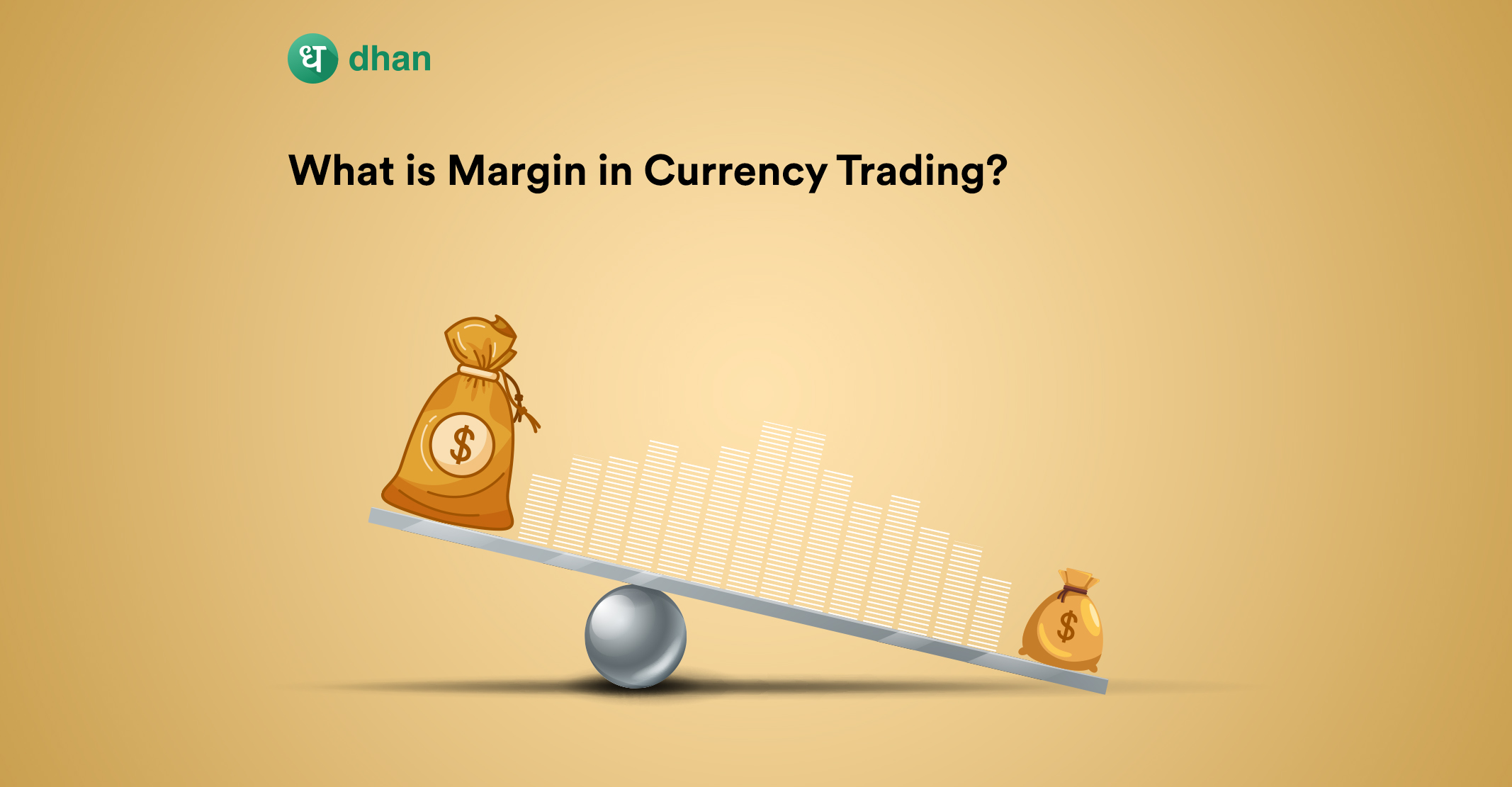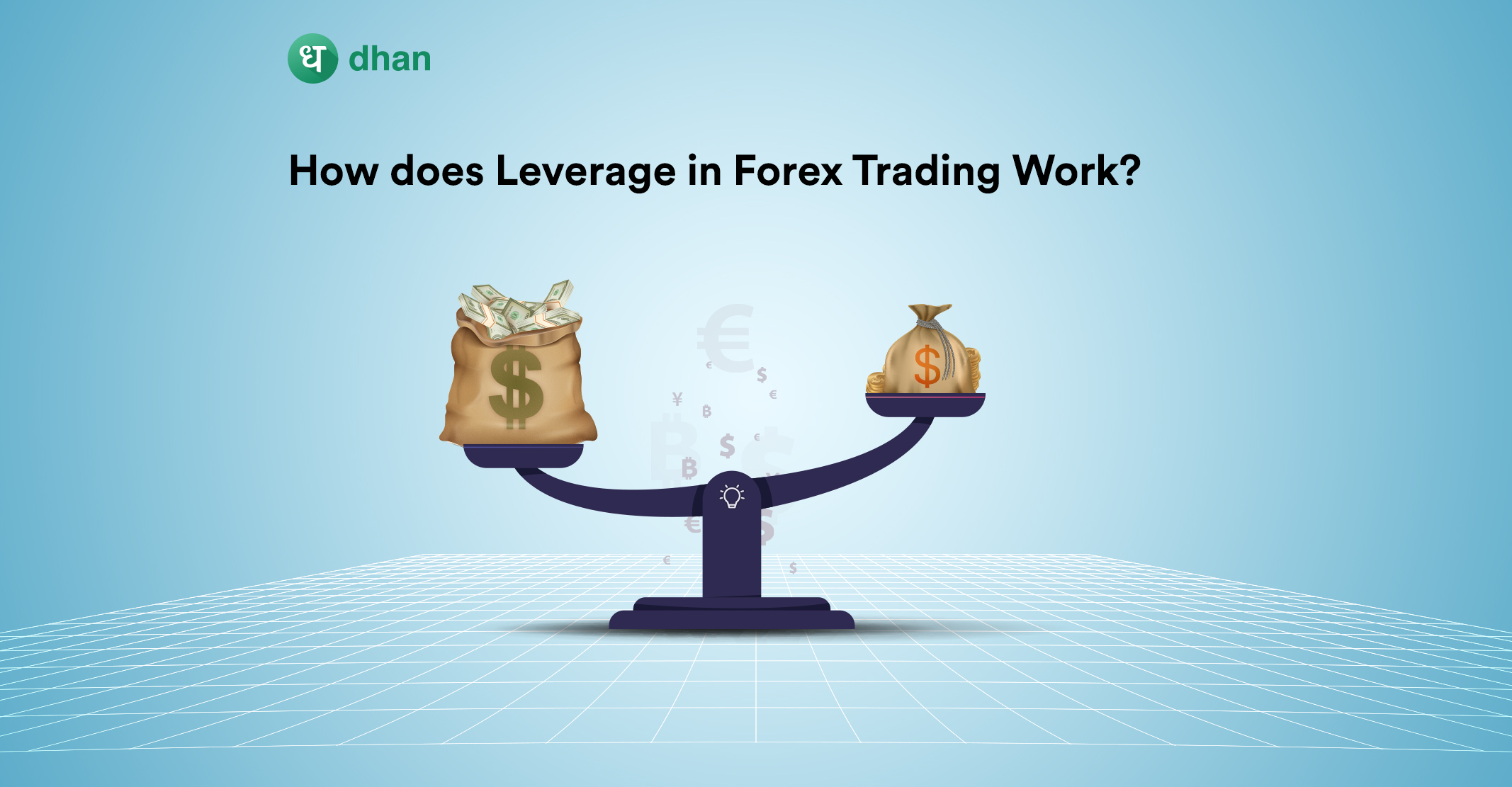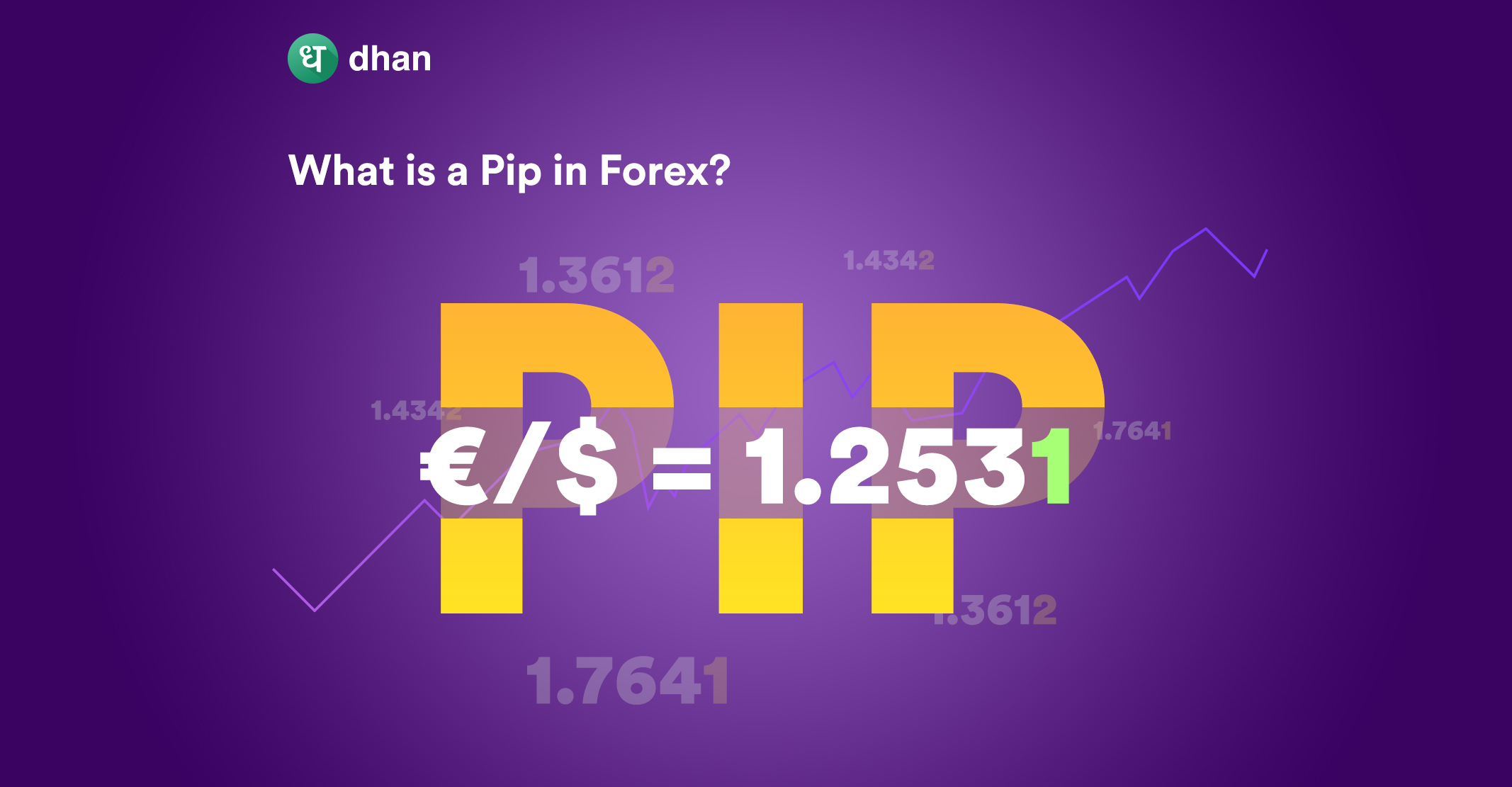What is Margin in Forex Trading?
A margin in forex trading is the initial deposit that you need to make in your trading account to take a position on any type of currency pair. This is also popularly called the “initial margin”.
This is what brokers mean when they display a field on the order screen that reads “Margin Required”. Generally, the margin requirement is more or less the same for intraday and overnight positions.
There was a time when the margin percentage varied from broker to broker. But now there’s a standardized margin requirement across the industry, at least for SEBI-authorized brokers. Forex traders prefer these relaxed margins.
The reason? The initial margin required to trade forex pairs may be less than the actual contract value.
In India, forex options and futures contracts have a lot size of 1,000 (USD, EUR, GBP) or 1,00,000 (in the case of JPY). The contract value is equal to the lot size multiplied by the latest exchange rate.
As you can tell, the contract value would be relatively high for currencies like USD, EUR, and GBP because of the exchange rate.
However, relaxed margins would allow traders to, say, buy currency futures worth Rs. 80,000 for Rs. 2,000 (at 40X leverage). The position acquired with the initial margin will move in tandem with the contract value.
That’s why a broker may “margin call” you if your position is making a loss. A margin call happens when the value of your trade falls below the margin requirement, soon after which the broker will contact you to add more funds.
Example of Margin in Forex Trading
Meet Mr. Karan C. He’s an experienced currency trader. Mr. Karan C is looking to trade USD-INR futures because he’s developed a strategy that can make him a profit. However, he can only spare Rs. 15,457.
In principle, this won’t even get him one USD-INR futures because the contract value would be upwards of Rs. 79,000. Lucky for him, he’s got a margin trading account.
So, he hops onto his broker’s forex trading platform and navigates to the currency futures contract. This is what he sees 👇
Mr. Karan C can trade at 43.63X leverage and the forex trading margin is just Rs. 1,850.4200 per contract. This means he can buy 8 USD-INR futures on margin as opposed to the 1 forex futures he was intending to buy.
Mr. Karan C hits buy while being aware that a drop in the contract value will affect the invested value, which is the margin he’s deposited. He’s prepared to pay the difference in case the value drops.
Currency derivatives in India are cash-settled. This simply means that every day and final P&L is settled in INR. In case Mr. Karan C forgets to square off his forex derivatives contract, his broker will do it for him (at a nominal charge).
Being the astute trader that he is, Mr. Karan C applies a trailing stop-loss to his currency futures trade. Want to know more about trailing-stop loss? Watch this video:
Forex Trading Margin in India
| Currency Pair | Margin |
| USD-INR | 2% |
| EUR-INR | 3% |
| GBP-INR | 4% |
| JPY-INR | 5% |
Note: The values shown above are approximate and may vary based on market conditions.
How is Forex Trading Margin Calculated?
By now, you must’ve noticed that a margin is always expressed as a percentage of the total contract value. It could be 0.5%, 1%, 2%, and so on. The margin calculation is thus straightforward.
If you see that a forex trading platform requires a 2% margin, then you can these steps to figure out the exact margin you need to deposit:
- Calculate the contract value by multiplying the lot size by the forex rate, the product of which we will call FXC
- Divide the margin percentage by 100, the value of which we will call MPC
- Finally, multiply FXC by MPC and you’re done!
Here’s a working example of how forex margin is calculated. We’ll pick the USD-INR futures contract. The forex rate is 79.7325 and the lot size is $1000. The margin required is 2%.
- 1000 x 79.7325 = 79,732.5 (FXC)
- 2 ÷ 100 = 0.02 (MPC)
- 79,732.5 x 0.02 = 1,594.65 (required margin)
The term leverage in forex trading, which is inseparable from the margin, is known as the margin ratio. You can calculate the leverage to begin forex trading by dividing the contract value by the required margin.
- 79,732.5 ÷ 1,594.65 = 50X
A point to note here. Leverage is represented as “(number)X”. In the example above, the leverage is 50x, which means that you can trade a contract that’s worth 50 times more than the margin required.
Can You Trade Forex Derivatives Without Margin?
Trading forex derivatives “without margin” could mean two things. One, a trader wants to purchase a derivative contract at the full price. Two, a trader wants to pay zero rupees to buy currency futures or options.
Neither is possible in India. Brokers who let you trade forex derivatives allow you to do so on a margin, always. If you’re planning to trade currency derivatives without a broker to avoid margins, that’s not possible either.
Only SEBI-approved exchanges and brokers can let you, a retail trader, buy and sell forex derivatives. What you can do is understand your risk profile, position limit, and other nuances of trading currencies to mitigate risk.
How to Open a Forex Margin Trading Account?
You can open a trading account that offers you margins for online currency trading in 5 simple steps. The first step is to find out which broker you’d like to choose.
The broker should offer a forex trading platform that’s rich with features yet cost-effective, much like Dhan. Everything after that is straightforward.
Complete the KYC process, get registered & approved, deposit the margin, and start trading currency derivatives! Here’s a step-by-step breakdown of how to open a margin account for currencies.
- Choose a forex trading platform
- Complete the KYC flow
- Get registered & approved (by exchanges)
- Deposit the margin for forex trading
- Start trading currency derivatives
Conclusion
Margins in forex trading are the minimum amount required to trade or take positions on currency derivatives. This is also called the required margin, which is nothing but the initial deposit you need to make to trade currencies.
There’s a standard margin requirement for currency trading across authorized brokers in India. The limits are set by the exchange. Forex trading margins are often expressed as a percentage of the total contract value.
Leverage, which is a term that’s often used with margin, is calculated by dividing the contract value by the margin requirement. That’s why leverage in forex trading is also known as the margin ratio.
Forex trading is legal in India through SEBI-authorized brokers like Dhan. Remember to always evaluate your risk profile, position size, and more before trading in highly leveraged currency derivatives.
FAQs
Q. What is Margin in Currency Trading?
A currency trading margin is an initial deposit required to buy and sell currency derivatives. Generally, the margin is represented as a percentage of the total value of a derivative contract. For example, a 2% margin requirement for a currency derivative worth Rs. 80,000 means you’ll have to deposit Rs. 1,600.
Q. Can I Trade Forex Without Margin?
A margin is a good faith deposit you need to make with your broker to trade currency derivatives. The forex trading broker is key to giving you access to exchange-traded currency derivatives. That’s why it’s not possible to trade forex in India without a margin.
Q. How is Margin Calculated in Forex Trading?
A margin in forex trading is calculated by multiplying the total contract value by the percentage of margin required. If there’s a 4% margin required to trade a USD-INR contract worth Rs. 82,000, then the margin can be calculated as follows: 82,000 x (4/100) = 3,280
Q. What is Margin Call Forex?
A margin call is a request to add more money to a trading account in the event that a position is losing money. Margin calls are initiated by a broker while the margin amount may change based on the currency derivatives contract’s daily value.
Disclaimer: This blog is not to be construed as investment advice. Trading and investing in the securities market carries risk. Please do your own due diligence or consult a trained financial professional before investing.




Comments are closed.